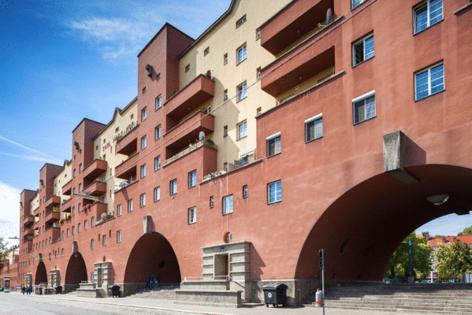Is Vienna a model for affordable housing? One Philly Council member thinks so
Published in Business News
For progressive politicians and policymakers, the Austrian capital of Vienna has long been a housing policy touchstone.
That’s because Vienna, despite its history as an imperial metropolis studded with ornamented palaces, is one of the most affordable major cities in Europe. Over the last century, the city government built 220,000 affordable apartments and funded a further 200,000 cooperative units.
Councilmember Jamie Gauthier went to Vienna earlier this year to learn more about how Vienna’s government has ensured rental homes remain attainable for everyone, even as the population grows and other European capitals grow ever more unaffordable.
“I was impressed by the amount of money they invest in social housing, by their existing stock, and by the amount of units they’re producing every year,” Gauthier said. “These aren’t people that are just walking around saying ‘housing is a human right.’ They’re doing things to actually embody that principle.”
Gauthier is the head of City Council’s housing committee and has carved out a name for herself as a proponent of affordable housing policy. She went to Vienna and Berlin earlier this year as part of a trip sponsored by Local Progress, an organization for left-leaning elected officials, as did Working Families Party Councilmember Kendra Brooks and a cohort of politicians from Chicago.
Gauthier believes there are lessons Philadelphia could learn from Vienna, although she acknowledges vast differences between the two cities.
Consistency in housing support and funding
Vienna’s commitment to municipally owned housing dates to the end of World War I, which transformed the city from the center of an ancient empire to the capital of a small nation. Following the war, a Social Democratic government took power and raised taxes on elites — who had nowhere else to go — and used it to buy up land across the city at huge discounts. The government proceeded to build tens of thousands of public housing units, which still exist today.
Gauthier toured the monumental Karl-Marx-Hof, an apartment complex three-quarters of a mile in length completed in 1930 that includes plenty of green space, rich amenities, and excellent transit access. The so-called Red Vienna government was socialist, hence the name of this project, but also democratic so they named another complex after George Washington.
“Although [Karl-Marx-Hof] is one of the first social housing developments, they are still pretty nice and well-maintained,” Gauthier said. “Even their oldest forms of municipal-owned housing are in good condition, even as they continue to build.”
...continued
©2024 The Philadelphia Inquirer, LLC. Visit at inquirer.com. Distributed by Tribune Content Agency, LLC.







Comments